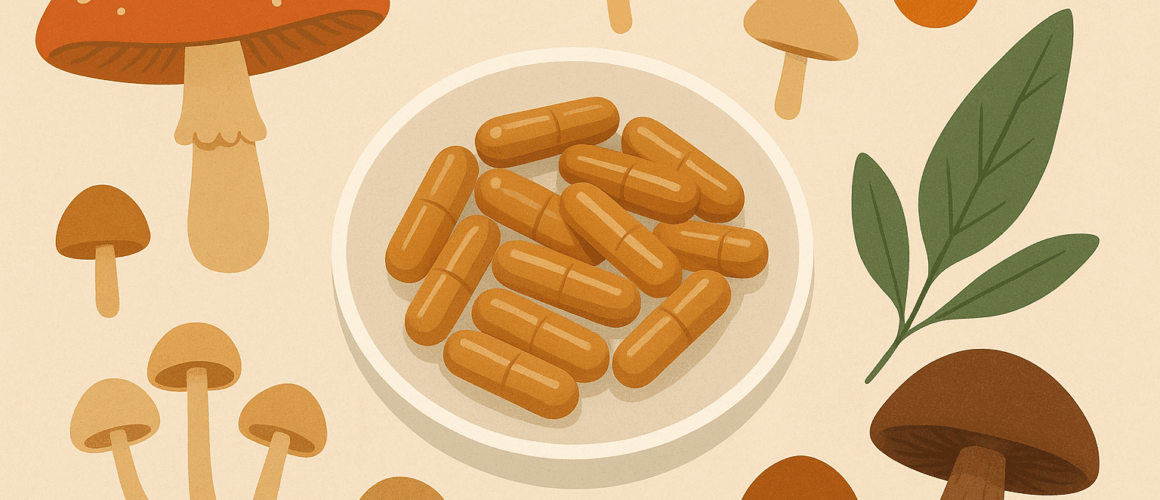MICRODOSING MUSHROOMS: GUIDE FOR CREATIVITY & HEALTH
Unlocking potential: The ultimate guide to microdosing mushrooms for enhanced creativity and wellness
Imagine tapping into a wellspring of creativity and wellness that lies just beneath the surface of your everyday life. In recent years, microdosing mushrooms has emerged as a transformative practice, captivating artists, entrepreneurs, and wellness enthusiasts alike. By taking small, measured doses of psilocybin mushrooms, users report enhanced focus, heightened creativity, and improved emotional well-being without the intense highs or lows associated with traditional psychedelics. But how can you safely and effectively harness this powerful tool? In “Unlocking Potential: The Ultimate Guide to Microdosing Mushrooms for Enhanced Creativity and Wellness,” we’ll explore the science behind microdosing, practical techniques to integrate it into your routine, and the potential benefits it offers. Whether you’re looking to unleash your creative genius or simply cultivate a healthier mindset, this guide will provide the insights you need to embark on your journey toward enhanced well-being. Get ready to unlock the potential that lies within you!
The science behind microdosing: How it works
Microdosing refers to the practice of consuming very low, sub-perceptual doses of a psychedelic substance, such as psilocybin mushrooms. Unlike a full dose that can lead to intense hallucinations and significant alterations in consciousness, microdosing involves taking a much smaller amount, typically around one-tenth to one-twentieth of a recreational dose. This allows individuals to experience the subtle effects of the substance without the overwhelming impact of a full psychedelic trip. The goal is to harness the benefits of these substances in a controlled and manageable manner.
Scientific research into microdosing is still in its early stages, but preliminary findings suggest that it can influence neural pathways in the brain. Psilocybin, the active compound in magic mushrooms, is known to bind to serotonin receptors, particularly the 5-HT2A receptor. This interaction is believed to promote neuroplasticity, enhancing the brain’s ability to form and reorganize synaptic connections. This can lead to improved cognitive flexibility, creativity, and emotional resilience. By taking small doses, microdosers aim to stimulate these beneficial effects without experiencing the intense psychedelic experience associated with larger doses.
Moreover, microdosing is thought to affect the default mode network (DMN) in the brain, which is responsible for self-referential thoughts and the mind-wandering state. High levels of activity in the DMN are often associated with conditions such as depression and anxiety. By modulating the activity of the DMN, microdosing may help reduce negative thought patterns, leading to improved mental health and well-being. As research continues to unfold, we are likely to gain a deeper understanding of the mechanisms behind microdosing and its potential therapeutic applications.
Benefits of microdosing for creativity and wellness
One of the most commonly reported benefits of microdosing is enhanced creativity. Many artists, writers, and musicians have turned to microdosing as a tool to break through creative blocks and access new levels of inspiration. The subtle effects of psilocybin can help individuals think outside the box, make novel connections, and approach problems from different angles. This boost in creative thinking can be invaluable for those in creative professions, as well as for anyone looking to bring more innovation and originality into their work and personal life.
In addition to fostering creativity, microdosing has been linked to improved emotional well-being. Users often report feeling more balanced, present, and connected to their emotions. The ability to modulate mood and alleviate symptoms of anxiety and depression is one of the key reasons why people turn to microdosing. By promoting a sense of calm and reducing stress, microdosing can help individuals navigate the challenges of daily life with greater ease and resilience. Furthermore, the enhanced emotional awareness that comes with microdosing can lead to better interpersonal relationships and a deeper sense of empathy.
Another significant benefit of microdosing is increased focus and productivity. Many individuals find that microdosing helps them maintain a clear and sharp mind, allowing them to concentrate on tasks more effectively. This heightened focus can be particularly beneficial in professional settings, where sustained attention and efficient problem-solving are crucial. By optimizing cognitive function and reducing mental clutter, microdosing can contribute to higher levels of performance and overall productivity.
Different types of mushrooms used for microdosing
When it comes to microdosing, not all mushrooms are created equal. The most commonly used mushrooms for microdosing are those that contain psilocybin, a naturally occurring psychedelic compound. Psilocybin mushrooms, often referred to as “magic mushrooms,” come in various species, each with its own unique characteristics. Some of the most popular species used for microdosing include Psilocybe cubensis, Psilocybe semilanceata, and Psilocybe cyanescens.
Psilocybe cubensis is one of the most widely recognized and accessible species of psilocybin mushrooms. Known for its relatively large size and potent effects, Psilocybe cubensis is often favored by those new to microdosing due to its availability and ease of identification. This species typically produces a balanced and predictable experience, making it a reliable choice for those looking to explore the benefits of microdosing.
Psilocybe semilanceata, commonly known as the liberty cap, is another popular choice for microdosing. This species is known for its small, bell-shaped cap and grows naturally in grasslands and meadows. Liberty caps are considered to be more potent than Psilocybe cubensis, and users often report a more intense and introspective experience. For those seeking a deeper connection to their inner selves and a heightened sense of introspection, Psilocybe semilanceata may be an ideal option.
Psilocybe cyanescens, or wavy caps, are renowned for their high psilocybin content and distinctive wavy cap edges. This species is typically found in wood chips and mulch in temperate climates. Psilocybe cyanescens is known for producing powerful and profound experiences, even at lower doses. As such, it is often recommended for more experienced microdosers who are comfortable with the intensity of its effects. Regardless of the species chosen, it is important to start with a low dose and gradually adjust based on individual sensitivity and desired outcomes.
How to start microdosing: A step-by-step guide
Embarking on a microdosing journey requires careful planning and a mindful approach. To begin, it is essential to source high-quality mushrooms from a reputable supplier. Ensuring that the mushrooms are correctly identified and free from contaminants is crucial for a safe and effective microdosing experience. Once you have obtained your mushrooms, the next step is to accurately measure your doses. A digital scale capable of measuring milligrams is recommended for precise dosing.
The typical microdosing regimen involves taking a small dose every few days. A common schedule is to dose on one day, followed by two days off, and then repeat. This allows the body to reset and prevents the development of tolerance. The standard microdosing dose ranges from 0.1 to 0.3 grams of dried mushrooms, but it is important to start with the lowest possible dose to gauge your individual response. Keep a journal to record your experiences, noting any changes in mood, creativity, focus, and overall well-being.
Integration is a key component of successful microdosing. Incorporate mindfulness practices such as meditation, journaling, or yoga to enhance your experience and promote self-awareness. Pay attention to the subtle effects of the mushrooms and how they influence your thoughts, emotions, and behaviors. By approaching microdosing with intention and reflection, you can maximize its benefits and gain valuable insights into your personal growth and wellness journey.
Potential risks and side effects of icrodosing
While microdosing can offer numerous benefits, it is important to be aware of potential risks and side effects. One of the primary concerns is the variability in individual responses to psilocybin. What works well for one person may not be suitable for another, and some individuals may experience heightened sensitivity to even small doses. Common side effects of microdosing can include nausea, headaches, and mild gastrointestinal discomfort. These symptoms are typically short-lived but can be unpleasant.
Mental health considerations are also crucial when it comes to microdosing. Individuals with a history of psychiatric disorders, particularly those involving psychosis or schizophrenia, should exercise caution. Psilocybin has the potential to exacerbate these conditions and may lead to adverse reactions. It is advisable to consult with a healthcare professional before starting a microdosing regimen, especially if you have pre-existing mental health concerns.
Another potential risk of microdosing is the legal status of psilocybin mushrooms. In many parts of the world, psilocybin remains a controlled substance, and possession or use can lead to legal consequences. It is important to be informed about the laws in your area and to consider the legal implications of microdosing. Engaging in responsible and informed use, as well as advocating for policy changes, can help mitigate these risks and promote safer access to psychedelic therapies.
Legal considerations surrounding mushroom microdosing
The legal landscape surrounding psilocybin mushrooms is complex and varies significantly by region. In many countries, including the United States, psilocybin is classified as a Schedule I substance, meaning it is considered to have a high potential for abuse and no accepted medical use. However, this classification is increasingly being challenged as research highlights the therapeutic potential of psilocybin for conditions such as depression, anxiety, and PTSD.
In recent years, there have been significant shifts in the legal status of psilocybin at the local level. Cities like Denver, Colorado, and Oakland, California, have decriminalized the possession and use of psilocybin mushrooms, signaling a growing acceptance of psychedelics. Additionally, Oregon became the first state to legalize the therapeutic use of psilocybin in controlled settings. These changes reflect a broader movement towards recognizing the potential benefits of psychedelics and reducing the stigma associated with their use.
Despite these advancements, it is important to approach microdosing with an awareness of the legal context in your area. Engaging in advocacy efforts and supporting organizations that promote psychedelic research and policy reform can contribute to a more informed and compassionate approach to psychedelic substances. As societal attitudes continue to evolve, it is likely that we will see further changes in the legal status of psilocybin, paving the way for safer and more accessible use.
Tips for maximizing your microdosing experience
To make the most of your microdosing journey, it is important to approach the practice with intention and mindfulness. Start by setting clear goals for your microdosing regimen. Whether you aim to enhance creativity, improve focus, or support emotional well-being, having a clear intention can help guide your experience and maximize the benefits. Reflect on your motivations and what you hope to achieve through microdosing.
Creating a supportive environment is another key factor in optimizing your microdosing experience. Choose a comfortable and safe setting where you can relax and be present. Surround yourself with positive influences, whether it’s calming music, nature, or supportive friends. The right environment can enhance the subtle effects of microdosing and contribute to a more meaningful and enjoyable experience.
Incorporating complementary practices such as meditation, journaling, or yoga can further enhance the benefits of microdosing. These practices promote self-awareness and help you integrate the insights gained from your microdosing experience into your daily life. Regularly reflecting on your thoughts, emotions, and behaviors can deepen your understanding of yourself and support your personal growth and well-being. By combining microdosing with mindfulness practices, you can create a holistic approach to enhancing your creativity and wellness.

